Academic work
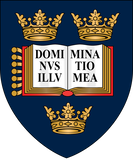
Peter is Professor of Global History at the University of Oxford and Director of the Oxford Centre for Byzantine Research. He has been Senior Research Fellow at Worcester College since 2000. His academic work revolves around teaching commitments, including PhD supervision; co-ordinating research programmes; hosting visiting scholars; leading outreach initiatives; mentoring early career scholars; and devising and taking part in academic conferences, seminars and lecture series related to the history of the peoples, cultures and regions of Europe, Asia and Africa.
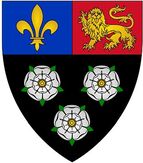
As Associate Director of the Programme in and Professor of Silk Roads Studies at King's College, Cambridge, Peter is involved in creating and hosting a termly seminar series such as on the gold of the steppes; urbanisation in medieval Armenia; Sogdian sarcophagi; Gandharan art; the Russian conquest of Central Asia in the 19th century; multiculturalism in Dunhuang; elites in 12-14th century Georgia; gender and art in contemporary Central Asia; China's Belt and Road Initiative.
Since 2000, the programme has also convened conferencs on the Alash movement in Kazakhstan in the 20th century, on rivers in Central Asia, and on the transmission of medical knowledge in the monsoon worlds of the Indian Ocean.
For more information about Silk Roads programme at King's, please click here
Since 2000, the programme has also convened conferencs on the Alash movement in Kazakhstan in the 20th century, on rivers in Central Asia, and on the transmission of medical knowledge in the monsoon worlds of the Indian Ocean.
For more information about Silk Roads programme at King's, please click here
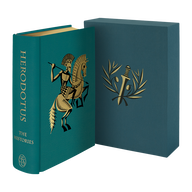
Peter wrote the introduction for a new edition of the Folio Society's publication of The Histories by Herodotus that was published in 2020.
For more information about this limited edition set, please click here
For more information about this limited edition set, please click here
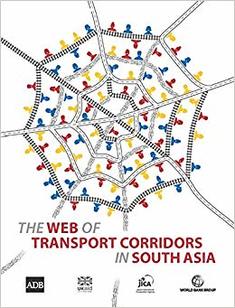
Peter was Senior Academic advisor and part of a team that wrote a major report on The Web of Transport Corridors in South Asia for the World Bank.
Published in August 2018, the report was a joint effort between the World Bank, Asian Development Bank, Japan International Cooperation Agency and the UK's Department for International Development. It looks at the ways in which infrastructure and investment stimulates growth - but also at the socio-economic and environmental impact of greater connectivity. To read, click here
Published in August 2018, the report was a joint effort between the World Bank, Asian Development Bank, Japan International Cooperation Agency and the UK's Department for International Development. It looks at the ways in which infrastructure and investment stimulates growth - but also at the socio-economic and environmental impact of greater connectivity. To read, click here
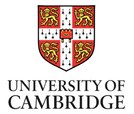
In June 2021, Peter convened and hosted a conference at King's College, Cambridge 'The Revolutions of 1917: Consequences for Central Asia.' Speakers included Nicola Piaciola, Alun Thomas, Botakoz Kassymbekova, Tomohiko Uyama and HE Erlan Idrissov, the Kazakh Ambassador to the United Kingdom.

in March 2021, Peter convened and hosted a conference on climate change in the Roman, Late Antiquity and Byzantine worlds. Speakers included Andrew Wilson, Johannes Preiser-Kapeller, John Haldon, Elena Xoplaki, Victoria Smith and Sabine Heubner.
See here for more.
See here for more.
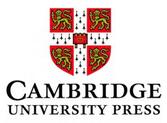
Peter co-edited, with Steven Brakman, Harry Garretsen and Charles van Marrewijk, a special volume of the Cambridge Journal of Regions, Economy and Society focusing on The Belt and Road Initiative. It was published in the spring of 2019.
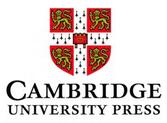
Peter is Series Editor of a major new multi-volume Cambridge University Press series that is centred on the history of Constantinople.
The first volumes in the series - on Statues in Constantinople and on The Hippodrome were published in 2021.
The first volumes in the series - on Statues in Constantinople and on The Hippodrome were published in 2021.
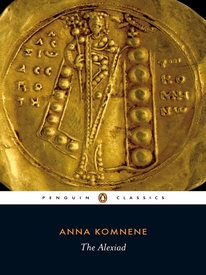
Peter's translation of The Alexiad by Anna Komnene for Penguin Classics appeared in 2009. One of the crown jewels of Byzantine literature, it was written in the 12th century by daughter of the Emperor Alexios I Komnenos (r. 1081-1118). Narrated in flamboyant style in florid Greek, it draws on a stunning array of documentary sources, letters and campaign notes, The text captures the Byzantine Empire at a momentous point in its history, and provides a riveting - and much misunderstood - window to the past.
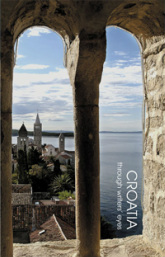
Croatia Through Writers' Eyes
This provides a selection of some of the best travel writing about Croatia from antiquity to the 20th century. Peter sets the scene with an introduction explaining some of the main themes in Croatia's past, from the time the coastline was an important part of the Roman empire to the brutal sack of Zadar in 1202 by the knights of the Fourth Crusade. For centuries, the country was a pivotal location along the trade routes of the Adriatic, and a pawn in the competition between Venice, Hungary and Constantinople. Things changed dramatically with the advance of the Ottomans into eastern and central Europe - and then again as World Wars scarred this part of the world. This book is a lovely guide that shows how many famous visitors understood Croatia - and how they wrote about their visits.
This provides a selection of some of the best travel writing about Croatia from antiquity to the 20th century. Peter sets the scene with an introduction explaining some of the main themes in Croatia's past, from the time the coastline was an important part of the Roman empire to the brutal sack of Zadar in 1202 by the knights of the Fourth Crusade. For centuries, the country was a pivotal location along the trade routes of the Adriatic, and a pawn in the competition between Venice, Hungary and Constantinople. Things changed dramatically with the advance of the Ottomans into eastern and central Europe - and then again as World Wars scarred this part of the world. This book is a lovely guide that shows how many famous visitors understood Croatia - and how they wrote about their visits.
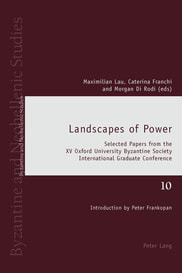
Landscapes of Power. Selected Papers from the XV Oxford University Byzantine Society International Graduate Conference.
Each year, some of the best young scholars in world gather in Oxford to present papers on their latest research in a conference supported by the Oxford Centre for Byzantine Research.
This volume gathers the best papers from the 15th Annual Conference held in the spring of 2013. Peter's introduction considers how to best address questions about imperial, elite and local power in the Byzantine Empire, and how to best make sense of continuities and changes over a millennium of more than a millennium of history.
Each year, some of the best young scholars in world gather in Oxford to present papers on their latest research in a conference supported by the Oxford Centre for Byzantine Research.
This volume gathers the best papers from the 15th Annual Conference held in the spring of 2013. Peter's introduction considers how to best address questions about imperial, elite and local power in the Byzantine Empire, and how to best make sense of continuities and changes over a millennium of more than a millennium of history.
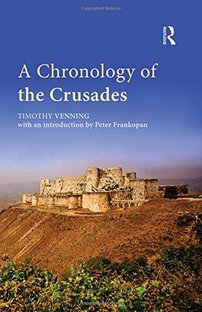
Peter provides the Introduction to Timothy Venning's monumental Chronology of the Crusades, in which he summarizes and contextualizes the Crusade era that followed the first expedition to Jerusalem in 1096.
This book catalogues the events of the 450 years that followed the launch of the earliest efforts to take the Holy City up to the Turkish attack on Belgrade in 1456. Combing the sources across a range of languages, Timothy Venning provides a meticulous day-by-day account of the main developments in this period, charting attacks and counter-attacks, recording appeals for help, noting grants of land, accounting for letters sent to and from the Holy Land, and showing how the momentum finally swung decisively in the Muslims' favour.
This book catalogues the events of the 450 years that followed the launch of the earliest efforts to take the Holy City up to the Turkish attack on Belgrade in 1456. Combing the sources across a range of languages, Timothy Venning provides a meticulous day-by-day account of the main developments in this period, charting attacks and counter-attacks, recording appeals for help, noting grants of land, accounting for letters sent to and from the Holy Land, and showing how the momentum finally swung decisively in the Muslims' favour.
Peter has published many articles in academic journals and edited volumes, including:
1. ‘Introduction to Strabo’, Strabo’s Geography, ed. S Pothecary (Princeton, 2024), pp. xx
2. 'Introduction to the Silk Roads Papers’, UNESCO Silk Roads papers’ (wth X. Chen), pp. 1-3
3. ‘Preface’ and ‘Final Words’ (with M-L. Nosch and F. Zhao), in F. Zhao and M-L. Nosch, Textiles and Clothing along the Silk Roads (Paris, 2022), pp. 6-7; 363-40.
4. ‘Kaiserkritik in 12th century Byzantium: understanding the significance of the Epitome historiôn of John Zonaras’, Travaux et Mémoires 26 (2022), 655-676.
5. ‘Les Routes de la soie. Entre réalités et imaginaires’, Cahiers d’Histoire 122 (2022), 99-113.
6. 'Rethinking Asia’, in Rethink, ed. A. Rajan (London, 2021), pp. 271-4
7. ‘Why our histories must be global’, in What is History, Now? eds. H. Carr and S. Lipscomb (London, 2021), pp. 17-32.
8. 'This Crisis has the Capacity to be Apocalyptic’, in Society in Crisis, ed. J. Kellerman Pillay, (Stockholm, 2021), pp. 15-22.
9. ‘Introduction to The Histories of Herodotus’, Herodotus, The Histories (London, 2020)
10. ‘Götterdämmerung. Wie – of wat – zal over de wereld heersen?’, Nexus 83 (2020), 91-103.
11. ‘The Origins, Context and Nature of the Belt and Road Initiative’ in H. Pechlander et al (eds.), China and the New Silk Road. Challenges and Impacts on the Regional and Local Level (Berlin, 2020), 15-22.
12. ‘Middle Asia, Christianity, Patristics and Orthodox Churches’, Encyclopaedia of the Bible and its reception (Berlin, 2020)
13. 'When Information Travels – the global impact of knowledge exchange’ in A. Linklater and A. Mackenzie (eds.) Knowledge and Information (Stockholm, 2019).
14. 'The New Silk Roads: an introduction to China's Belt and Road Initiative' (with S. Brakman, H. Garretsen and C. van Marrewijk), Cambridge Journal of Regions, Economy and Society 12 (2019) (forthcoming)
15. 'Why we need to think about the Global Middle Ages', Journal of Medieval Worlds 1 (2019), 1-6
16. 'Venice in the Age of the Crusades', in J. Herrin and M. Skroblar (eds.), The Medieval Adriatic (forthcoming, 2019)
17. 'And the sight of them was like many rivers streaming from all sides': Byzantine attitudes to Crusades and Crusaders', in N. Hodgson and L. Ni Chierigh, Sources for the Crusades: Textual Tradition and Literary Influences (forthcoming, 2019)
18. 'Plotting the future of the Belt and Road Initiative. Connections, opportunities and challenges', in F. Cheung (ed.) Regional Connection under the Belt and Road Initiative (London, 2018), pp. 263-76.
19. 'Geschichte des globalen Stadt’, in A. Birken (ed.) ZukunftsWerte. Verantwortug für die Welt von Morgen (Göttingen, 2018), pp. 230-7.
20. 'Aristocratic family narratives in 12th century Byzantium’, in eds. I. Toth and T. Shawcross, Reading in the Byzantine Empire and Beyond (Cambridge, 2018), pp. 317-35.
21. 'Le grandi vie del passato per capire il futuro', Aspenia 78 (2017), 112-23
22. 'The Asian Library at Leiden University', in A. Reeuwijk (ed.) Voyage of Discovery. Exploring the Collections of the Asian Library at Leiden University (Leiden, 2017), 12-13.
23. ‘Re-interpreting the family in Comnenian Byzantium: where blood is not thicker than water’, Byzantium in the 11th Century, eds. M. Lauxtermann and M. Whittow (London, 2017), pp. 281-96.
24. 'Towards a Chronology of the Crusades: Introduction', T. Venning, A Chronology of the Crusades 1095-1456 (London, 2015)
25. ‘Understanding the Greek sources for the First Crusade’, in eds. M. Bull and D. Kempf, Writing the Early Crusades. Text, Transmission and Memory (Woodbridge, 2014), pp. 38-52.
26. 'Introduction', Landscapes of Power. Selected Papers from the XVth Oxford University Byzantine Society International Graduate Conference eds. M. Lau, M di Rodi and C. Franchi (Frankfurt, 2014), pp. 1-15.
27. ‘Byzantine military expeditions against the Serbs in the 1090s: a new interpretation’, Bulgaria Medievalis 3 (2012), 385-97.
28. ‘Turning Latin into Greek: Anna Komnene and the Gesta Roberti Wiscardi’, Journal of Medieval History 39 (2013), 80-99.
29. '11th Century Military Seals from Bulgaria: Some Suggestions’, in Bulgaria Medievalis 2: Festschrift in honour of Professor Vassil Giuzelev (2011), 137-43.
30. ‘Alexios I Komnenos’; ‘Belisarius’; ‘Manzikert’ entries, Encyclopedia of War, ed. G. Martel et al (Wiley-Blackwell, London, 2012).
31. ‘Land and power in the middle and late Byzantine periods’, in ed. J. Haldon, A Social History of Byzantium (Oxford 2009), pp. 112-42.
32. ‘The Literary, Cultural and Political Context for the Twelfth-century Commentary on the Nicomachean Ethics’ in ed. C. Barber, Medieval Greek Commentaries on the Nicomachean Ethics (Leiden, 2009), pp. 45-62.
33. ‘Where Advice meets Criticism in 11th Century Byzantium: Theophylact of Ohrid, John the Oxite and their (re)presentations to the Emperor’, Al-Masaq, vol. 20 (2008), 71-88.
34. ‘Kinship and the distribution of power in Komnenian Byzantium’, English Historical Review 495 (2007), 1-34.
35. ‘The fall of Nicaea and the towns of western Asia Minor to the Turks in the later 11th Century: the curious case of Nikephoros Melissenos’, Byzantion 76 (2006) 153-84.
36. ‘Challenges to imperial authority in the reign of Alexios I Komnenos: the conspiracy of Nikephoros Diogenes’, Byzantinoslavica 64 (2006), 257-74.
37. ‘Who was ‘Devgenevich’ of the Russian Primary Chronicle and ‘Pseudo-Diogenes’ of the Greek sources?’, Byzantine and Modern Greek Studies 29, pt 2 (2005), 147-66.
38. ‘Byzantine trade privileges to Venice in the eleventh century: the chrysobull of 1092’, Journal of Medieval History 30 (2004), 135-60.
39. ‘Co-operation between Constantinople and Rome before the First Crusade: a study of the convergence of interests in Croatia in the late 11th Century’, Crusades 3 (2004), 1-13.
40. ‘Challenges to imperial authority in Byzantium: Revolts on Crete and Cyprus at the end of the 11th Century’, Byzantion 74 (2004), 382-402.
41. ‘Some notes on Byzantine foreign policy in the 9th-11th Centuries: was there really such a thing as steppe diplomacy?, Journal of Medieval and Islamic History 3 (2003), 1-11.
42. ‘The Byzantine Empire’, in Literature of Travel and Exploration. An Encyclopedia, ed. J. Speake (London, 2003)
43. ‘Croatia, Bosnia-Hercegovina and Serbia-Montenegro’, in Through the Paper Curtain: Insiders and Outsiders in the New Europe, eds. C. Jenkins and J. Smith (London, 2003), pp. 168-87.
44. ‘The imperial governors of Dyrrakhion during the reign of Alexios I Komnenos’, Byzantine and Modern Greek Studies 26 (2002), 65-103.
45. ‘Perception and Projection of Prejudice: Anna Comnena, the Alexiad and the First Crusade’, in eds. S. Edgington and S. Lambert, Gendering the Crusades (Cardiff and New York, 2001), pp. 59-76.
46. ‘The workings of the Byzantine provincial administration in the 10th-12th Centuries: the example of Preslav’, in Byzantion 71 (2001), 73-97.
47. ‘Levels of contact between West and East : pilgrims and visitors to Constantinople and Jerusalem in the 9th –12th Centuries’ in eds. S. Searight and M. Wagstaff, Travellers in the Levant: Voyagers and Visionaries (Durham, 2001), pp. 87-108.
48. ‘The numismatic evidence for the Danube region 971-1092’, Byzantine and Modern Greek Studies 21 (1997), 30-9.
49. ‘A victory of Gregory Pakourianos against the Pechenegs’, Byzantinoslavica 57 (1996), 278-81.
1. ‘Introduction to Strabo’, Strabo’s Geography, ed. S Pothecary (Princeton, 2024), pp. xx
2. 'Introduction to the Silk Roads Papers’, UNESCO Silk Roads papers’ (wth X. Chen), pp. 1-3
3. ‘Preface’ and ‘Final Words’ (with M-L. Nosch and F. Zhao), in F. Zhao and M-L. Nosch, Textiles and Clothing along the Silk Roads (Paris, 2022), pp. 6-7; 363-40.
4. ‘Kaiserkritik in 12th century Byzantium: understanding the significance of the Epitome historiôn of John Zonaras’, Travaux et Mémoires 26 (2022), 655-676.
5. ‘Les Routes de la soie. Entre réalités et imaginaires’, Cahiers d’Histoire 122 (2022), 99-113.
6. 'Rethinking Asia’, in Rethink, ed. A. Rajan (London, 2021), pp. 271-4
7. ‘Why our histories must be global’, in What is History, Now? eds. H. Carr and S. Lipscomb (London, 2021), pp. 17-32.
8. 'This Crisis has the Capacity to be Apocalyptic’, in Society in Crisis, ed. J. Kellerman Pillay, (Stockholm, 2021), pp. 15-22.
9. ‘Introduction to The Histories of Herodotus’, Herodotus, The Histories (London, 2020)
10. ‘Götterdämmerung. Wie – of wat – zal over de wereld heersen?’, Nexus 83 (2020), 91-103.
11. ‘The Origins, Context and Nature of the Belt and Road Initiative’ in H. Pechlander et al (eds.), China and the New Silk Road. Challenges and Impacts on the Regional and Local Level (Berlin, 2020), 15-22.
12. ‘Middle Asia, Christianity, Patristics and Orthodox Churches’, Encyclopaedia of the Bible and its reception (Berlin, 2020)
13. 'When Information Travels – the global impact of knowledge exchange’ in A. Linklater and A. Mackenzie (eds.) Knowledge and Information (Stockholm, 2019).
14. 'The New Silk Roads: an introduction to China's Belt and Road Initiative' (with S. Brakman, H. Garretsen and C. van Marrewijk), Cambridge Journal of Regions, Economy and Society 12 (2019) (forthcoming)
15. 'Why we need to think about the Global Middle Ages', Journal of Medieval Worlds 1 (2019), 1-6
16. 'Venice in the Age of the Crusades', in J. Herrin and M. Skroblar (eds.), The Medieval Adriatic (forthcoming, 2019)
17. 'And the sight of them was like many rivers streaming from all sides': Byzantine attitudes to Crusades and Crusaders', in N. Hodgson and L. Ni Chierigh, Sources for the Crusades: Textual Tradition and Literary Influences (forthcoming, 2019)
18. 'Plotting the future of the Belt and Road Initiative. Connections, opportunities and challenges', in F. Cheung (ed.) Regional Connection under the Belt and Road Initiative (London, 2018), pp. 263-76.
19. 'Geschichte des globalen Stadt’, in A. Birken (ed.) ZukunftsWerte. Verantwortug für die Welt von Morgen (Göttingen, 2018), pp. 230-7.
20. 'Aristocratic family narratives in 12th century Byzantium’, in eds. I. Toth and T. Shawcross, Reading in the Byzantine Empire and Beyond (Cambridge, 2018), pp. 317-35.
21. 'Le grandi vie del passato per capire il futuro', Aspenia 78 (2017), 112-23
22. 'The Asian Library at Leiden University', in A. Reeuwijk (ed.) Voyage of Discovery. Exploring the Collections of the Asian Library at Leiden University (Leiden, 2017), 12-13.
23. ‘Re-interpreting the family in Comnenian Byzantium: where blood is not thicker than water’, Byzantium in the 11th Century, eds. M. Lauxtermann and M. Whittow (London, 2017), pp. 281-96.
24. 'Towards a Chronology of the Crusades: Introduction', T. Venning, A Chronology of the Crusades 1095-1456 (London, 2015)
25. ‘Understanding the Greek sources for the First Crusade’, in eds. M. Bull and D. Kempf, Writing the Early Crusades. Text, Transmission and Memory (Woodbridge, 2014), pp. 38-52.
26. 'Introduction', Landscapes of Power. Selected Papers from the XVth Oxford University Byzantine Society International Graduate Conference eds. M. Lau, M di Rodi and C. Franchi (Frankfurt, 2014), pp. 1-15.
27. ‘Byzantine military expeditions against the Serbs in the 1090s: a new interpretation’, Bulgaria Medievalis 3 (2012), 385-97.
28. ‘Turning Latin into Greek: Anna Komnene and the Gesta Roberti Wiscardi’, Journal of Medieval History 39 (2013), 80-99.
29. '11th Century Military Seals from Bulgaria: Some Suggestions’, in Bulgaria Medievalis 2: Festschrift in honour of Professor Vassil Giuzelev (2011), 137-43.
30. ‘Alexios I Komnenos’; ‘Belisarius’; ‘Manzikert’ entries, Encyclopedia of War, ed. G. Martel et al (Wiley-Blackwell, London, 2012).
31. ‘Land and power in the middle and late Byzantine periods’, in ed. J. Haldon, A Social History of Byzantium (Oxford 2009), pp. 112-42.
32. ‘The Literary, Cultural and Political Context for the Twelfth-century Commentary on the Nicomachean Ethics’ in ed. C. Barber, Medieval Greek Commentaries on the Nicomachean Ethics (Leiden, 2009), pp. 45-62.
33. ‘Where Advice meets Criticism in 11th Century Byzantium: Theophylact of Ohrid, John the Oxite and their (re)presentations to the Emperor’, Al-Masaq, vol. 20 (2008), 71-88.
34. ‘Kinship and the distribution of power in Komnenian Byzantium’, English Historical Review 495 (2007), 1-34.
35. ‘The fall of Nicaea and the towns of western Asia Minor to the Turks in the later 11th Century: the curious case of Nikephoros Melissenos’, Byzantion 76 (2006) 153-84.
36. ‘Challenges to imperial authority in the reign of Alexios I Komnenos: the conspiracy of Nikephoros Diogenes’, Byzantinoslavica 64 (2006), 257-74.
37. ‘Who was ‘Devgenevich’ of the Russian Primary Chronicle and ‘Pseudo-Diogenes’ of the Greek sources?’, Byzantine and Modern Greek Studies 29, pt 2 (2005), 147-66.
38. ‘Byzantine trade privileges to Venice in the eleventh century: the chrysobull of 1092’, Journal of Medieval History 30 (2004), 135-60.
39. ‘Co-operation between Constantinople and Rome before the First Crusade: a study of the convergence of interests in Croatia in the late 11th Century’, Crusades 3 (2004), 1-13.
40. ‘Challenges to imperial authority in Byzantium: Revolts on Crete and Cyprus at the end of the 11th Century’, Byzantion 74 (2004), 382-402.
41. ‘Some notes on Byzantine foreign policy in the 9th-11th Centuries: was there really such a thing as steppe diplomacy?, Journal of Medieval and Islamic History 3 (2003), 1-11.
42. ‘The Byzantine Empire’, in Literature of Travel and Exploration. An Encyclopedia, ed. J. Speake (London, 2003)
43. ‘Croatia, Bosnia-Hercegovina and Serbia-Montenegro’, in Through the Paper Curtain: Insiders and Outsiders in the New Europe, eds. C. Jenkins and J. Smith (London, 2003), pp. 168-87.
44. ‘The imperial governors of Dyrrakhion during the reign of Alexios I Komnenos’, Byzantine and Modern Greek Studies 26 (2002), 65-103.
45. ‘Perception and Projection of Prejudice: Anna Comnena, the Alexiad and the First Crusade’, in eds. S. Edgington and S. Lambert, Gendering the Crusades (Cardiff and New York, 2001), pp. 59-76.
46. ‘The workings of the Byzantine provincial administration in the 10th-12th Centuries: the example of Preslav’, in Byzantion 71 (2001), 73-97.
47. ‘Levels of contact between West and East : pilgrims and visitors to Constantinople and Jerusalem in the 9th –12th Centuries’ in eds. S. Searight and M. Wagstaff, Travellers in the Levant: Voyagers and Visionaries (Durham, 2001), pp. 87-108.
48. ‘The numismatic evidence for the Danube region 971-1092’, Byzantine and Modern Greek Studies 21 (1997), 30-9.
49. ‘A victory of Gregory Pakourianos against the Pechenegs’, Byzantinoslavica 57 (1996), 278-81.